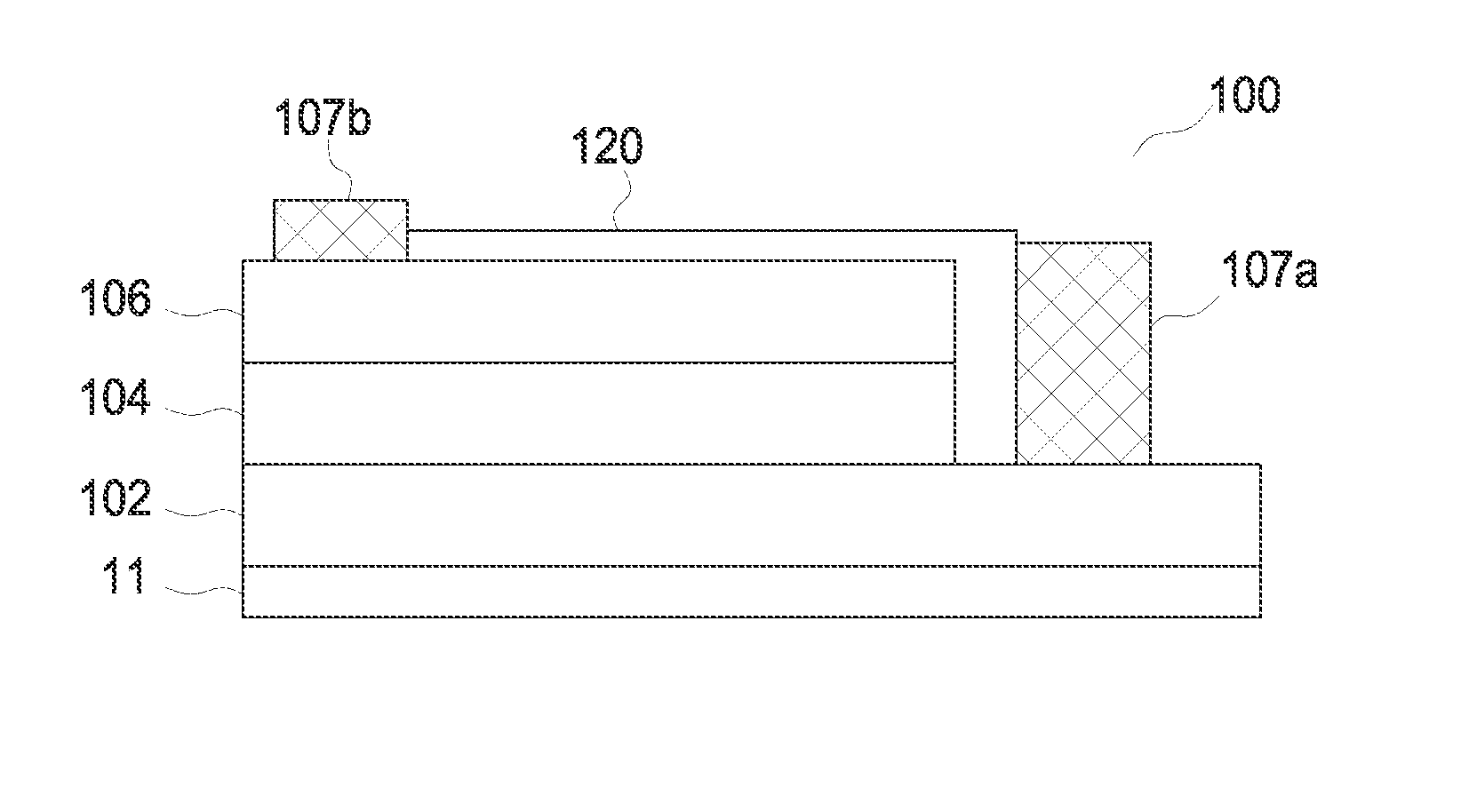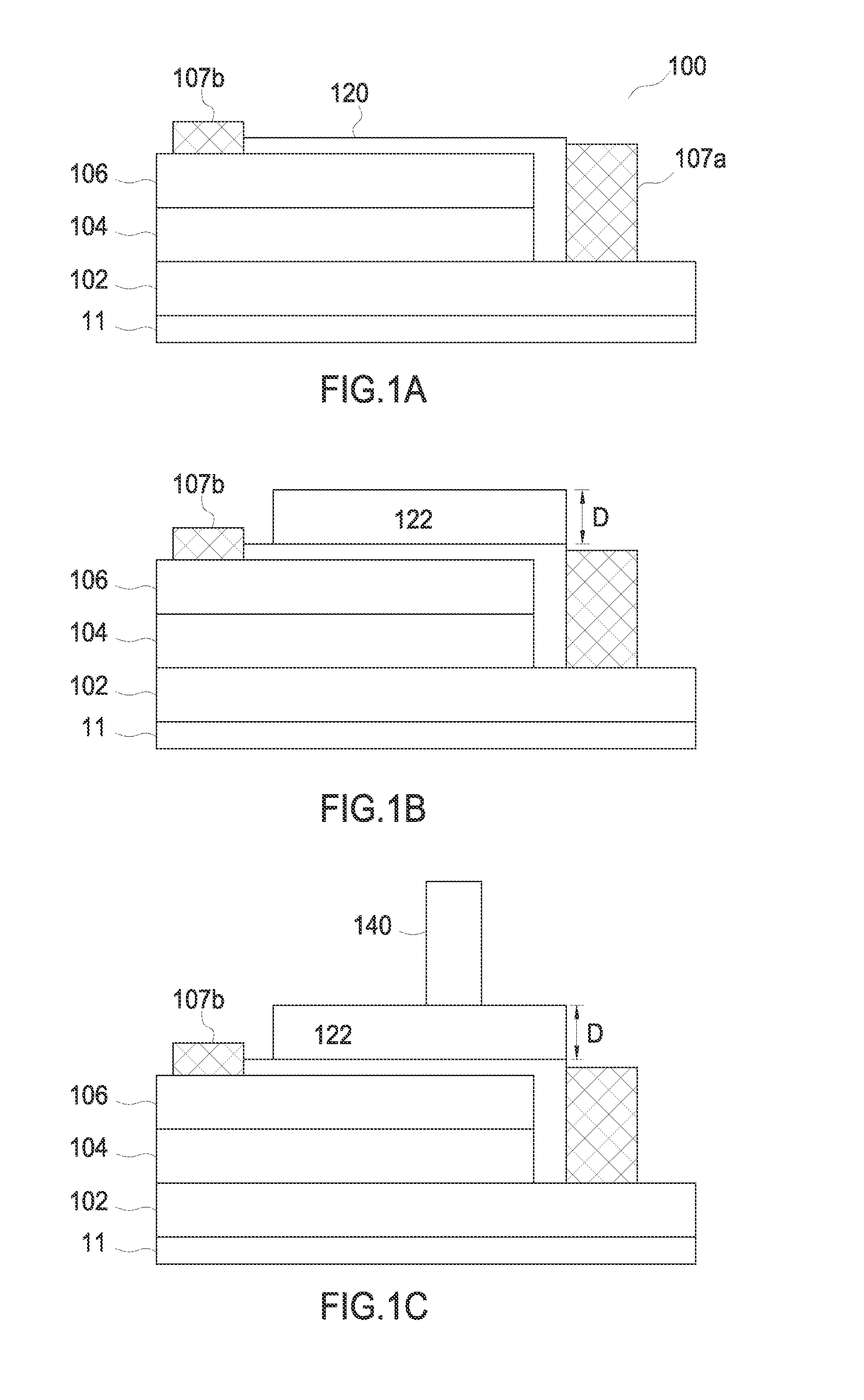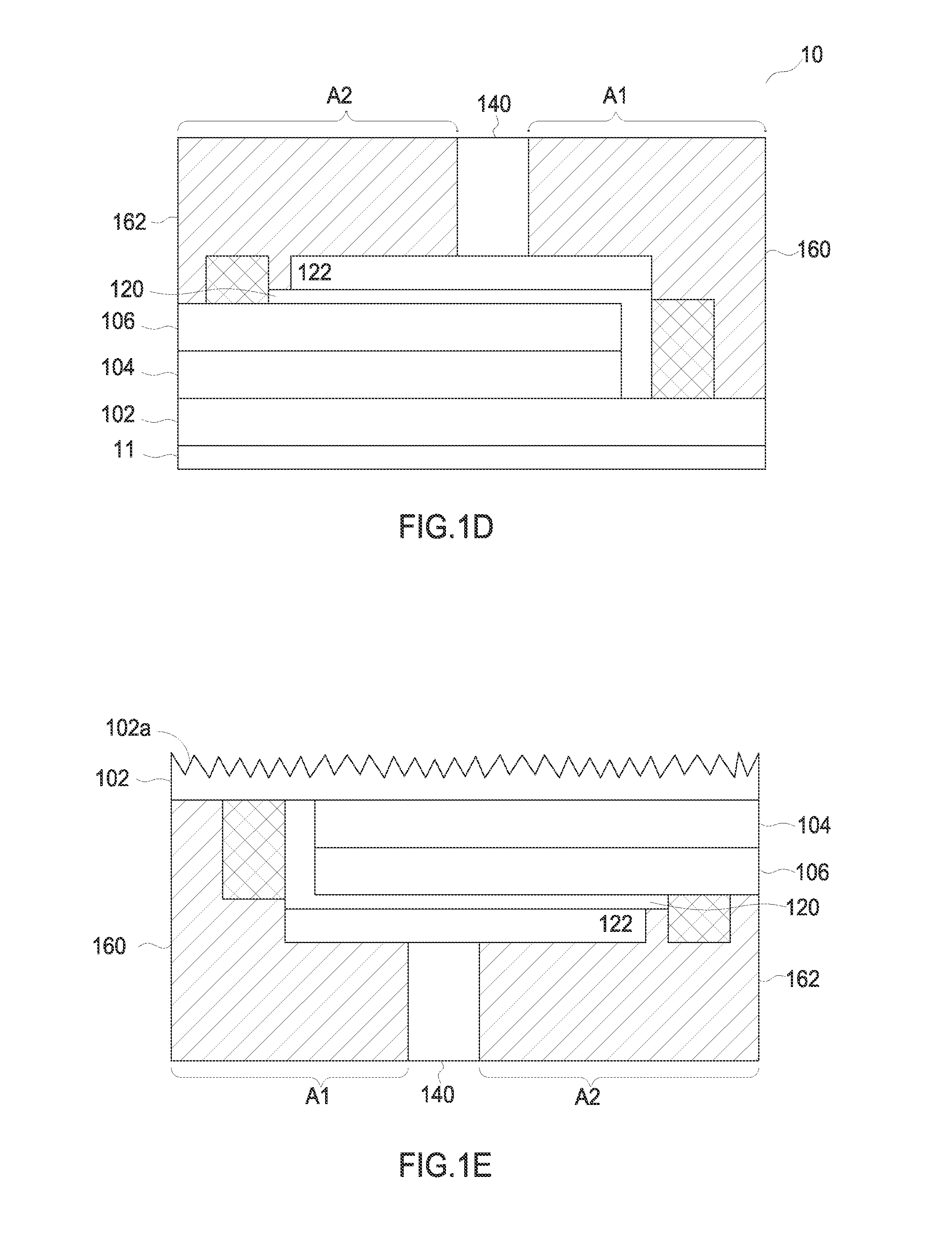Light emitting device and manufacture method thereof
a technology of light-emitting devices and manufacturing methods, which is applied in the manufacture of semiconductor/solid-state devices, semiconductor devices, electrical devices, etc., can solve the problems of loss of market competitiveness, heat generated by leds, and inconvenient illumination of conventional leds
- Summary
- Abstract
- Description
- Claims
- Application Information
AI Technical Summary
Benefits of technology
Problems solved by technology
Method used
Image
Examples
Embodiment Construction
[0034]FIGS. 1A-1E illustrate the method for forming a light emitting device (LED) according to one embodiment of the present disclosure. Referring to FIG. 1A, at first, a light emitting structure 100 is formed. The light emitting structure 100 includes a substrate 11, a first conductive layer 102 as a cladding layer, an active layer 104 disposed on the layer 102 as a light emitting layer, and a second conductive layer 106 disposed on the active layer 104 as another cladding layer. Preferably, as shown in FIG. 1A, an electrode or bonding pad 107a is disposed on an exposed portion of the layer 102, and another electrode or bonding pad 107b is disposed on the layer 106. The manufacture method and the material (e.g., Aluminum) of electrode or bonding pads 107a and 107b are well known to those skilled in the art and thus are omitted hereinafter. Furthermore, in one embodiment, the light emitting structure 100 includes a passivation layer 120 to protect the light emitting structure 100. A...
PUM
 Login to View More
Login to View More Abstract
Description
Claims
Application Information
 Login to View More
Login to View More - R&D
- Intellectual Property
- Life Sciences
- Materials
- Tech Scout
- Unparalleled Data Quality
- Higher Quality Content
- 60% Fewer Hallucinations
Browse by: Latest US Patents, China's latest patents, Technical Efficacy Thesaurus, Application Domain, Technology Topic, Popular Technical Reports.
© 2025 PatSnap. All rights reserved.Legal|Privacy policy|Modern Slavery Act Transparency Statement|Sitemap|About US| Contact US: help@patsnap.com



